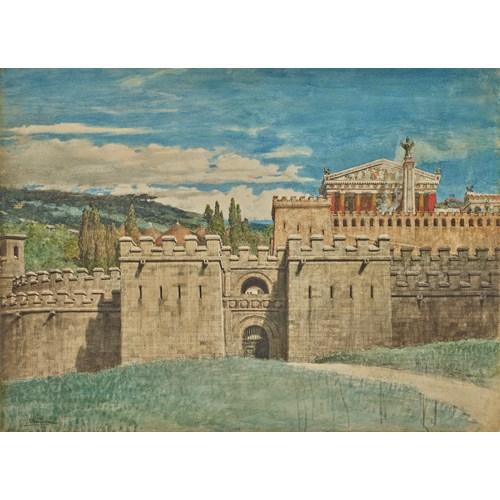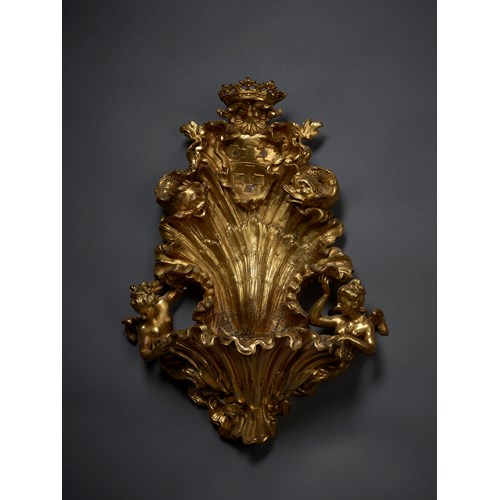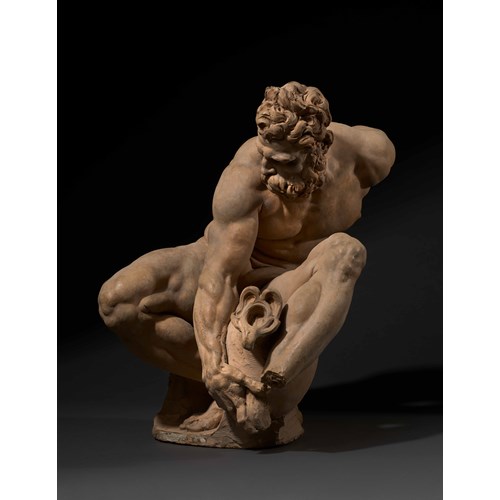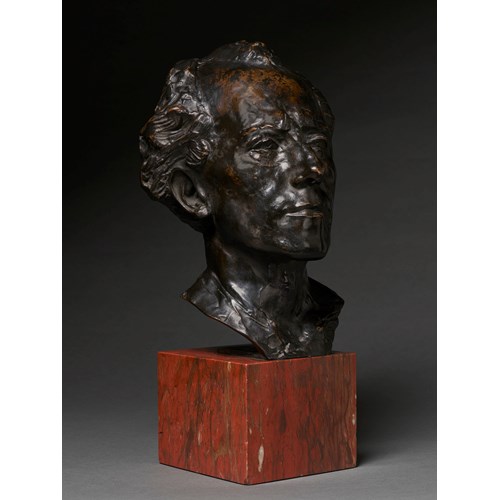Walter Sickert
Bonne Fille
Date c.1904-5
Medium Oil on canvas
Dimension 46 x 37.5 cm (18¹/₈ x 14³/₄ inches)
Having spent five years primarily focused on capturing the streets, buildings, and canals of Dieppe and Venice, Sickert shifted his attention to painting figures indoors in 1904, once again in Venice. According to Wendy Baron, this shift represented a radical change in his aesthetic interests (W. Baron, Sickert, Paintings and Drawings, Yale University Press, New Haven and London, 2006, p.49). Working with a small group of models, Sickert repeatedly painted them in similar settings and poses, refining the essential tones, patterns, and character of his subjects.
In Bonne Fille, the sitter's posture appears awkward, with her neck twisted towards the viewer as she sits on the bed. The bed and bedding are suggested through lively brushwork, and colour is used sparingly, with fleeting moments of highlighted areas. This increasingly spontaneous and expressive handling of paint became a defining characteristic of Sickert's work. During this period, he honed qualities such as swiftness, directness, and economy, which were fully showcased upon his return to London.
As Baron comments, ‘it is all but impossible to separate the figure pictures, mainly nudes on metal-framed bedsteads, which Sickert did in France in 1904-05 from those he did in London after his return in 1905. As was usual in Sickert’s work, there are clear compositional interrelationships between the various bedstead pictures which, in this case, extend beyond those executed at about the same date, in the same studio, or even in the same country’ (W. Baron. op. cit., p.55).
Date: c.1904-5
Medium: Oil on canvas
Signature: Signed Sickert (lower right)
Dimension: 46 x 37.5 cm (18¹/₈ x 14³/₄ inches)
Provenance: Bernheim Jeune, Paris
Bernard Falk
His sale, Christie’s London, 18 November 1955, lot 62, where acquired by Lord Beaverbrook, by whom gifted to the Beaverbrook Art Gallery in 1959; by whom sold in 2023
Literature: Beaverbrook Art Gallery: Paintings, University Press of New Brunswick, Fredericton, 1959, p. 59, illustrated pl. 43
Lillian Browse, Sickert, Rupert Hart-Davis, London, 1960, p. 87
Wendy Baron, The Camden Town Group, Scolar Press, 1979, p. 388, 391
Wendy Baron, Sickert, Paintings and Drawings, Yale University Press, New Haven and London, 2006, no. 231, illustrated p. 302
Exhibition: London, New English Art Club, Winter 1906, no. 105
Paris, Bernheim Jeune, Exposition Sickert, 10 - 19 January 1907, no. 6
Paris, Bernheim Jeune, 18 - 19 June 1909, no. 61
Halifax, Dalhousie University Art Gallery, Walter Richard Sickert Exhibition, November - December 1971 (unnumbered)
Fredericton, Beaverbrook Art Gallery, Sargeant to Freud: Modern British Paintings and Drawings in the Beaverbrook Collection, 24 May - 13 September 1998
More artworks from the Gallery









